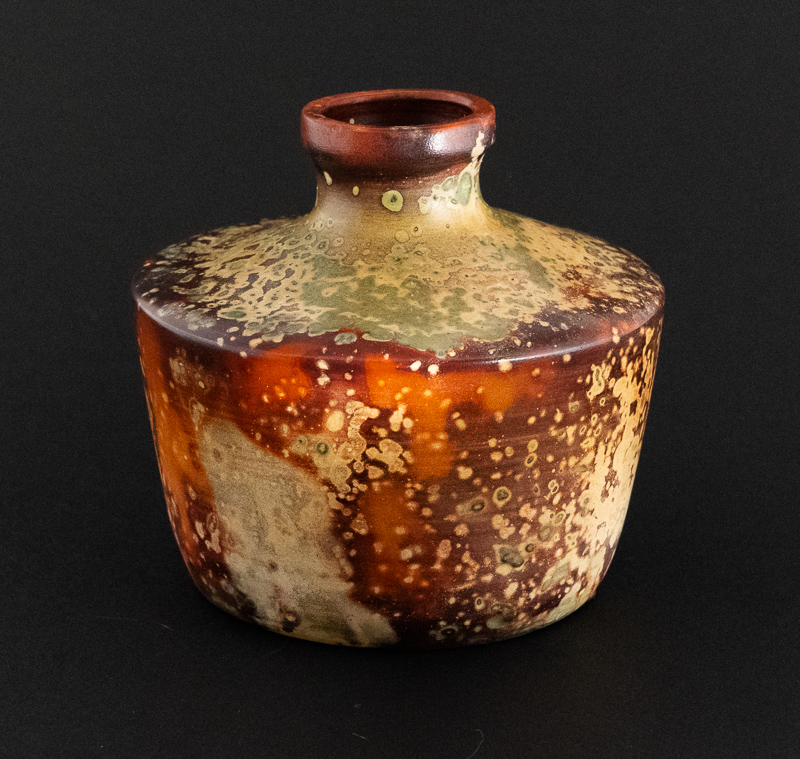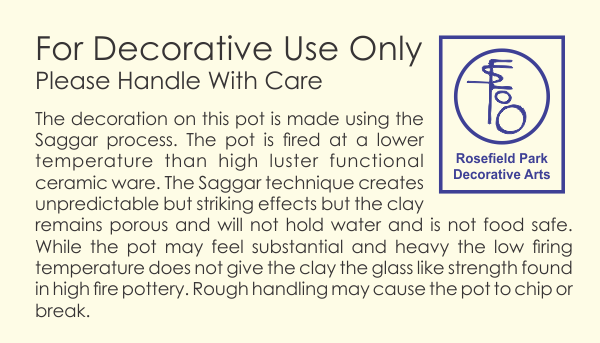Saggar Pottery
In early days of pottery making wood fires were used to vitrify the clay and give it a stronger structure. Sometimes a saggar or large ceramic container was used to protect the pottery from the soot and ash from the wood fire.

Saggars can also be used to create the opposite effect, that is, to contain smoke and ash to give the fired pottery striking patters of black gray and colors from chemicals used to treat the ware before firing. I have used a simple variation of this procedure using aluminum foil to create a tent to contain the smoke and fumes from organic materials placed at the bottom of a treated pot before being placed in a propane fired kiln.
Preparing the Pot
After throwing, drying and bisque firing a pot I sand the pot to get the smoothest surface. Pots made from porcelain clay work the best.
Next I soak the pot in ferric chloride then sprinkle it copper sulfate crystals and let it dry. Ferric chloride is commonly used in the making of printed circuit boards and copper sulfate is used as a root killer.
Secret Ingredient
When the pot is dry I put a small piece of organic material in the center of a large sheet of tin foil, place the pot on top and wrap the foil to create a small smoke chamber. I use material I find around my shop such as moss, lichen, pine needles or even horse hair.
Swirling Smoke
The pots are fired in a gas kiln at 1000 degrees F for about and hour. During that time the organic material smolders causing the smoke to swirl around inside the foil tent reacting with the chemicals used to pretreat the pot.
Developing the Colors
When the kiln has cooled to around 200 degrees I remove the pot and spray it with a lacquer finish to give it a satin sheen. The spray causes a rapid final cooling of the surface and develops the patterns of orange, yellow, green and soft cream colors.
